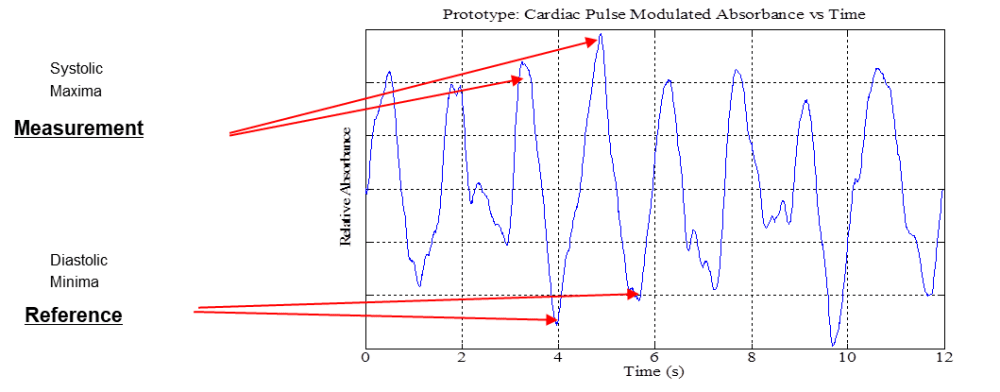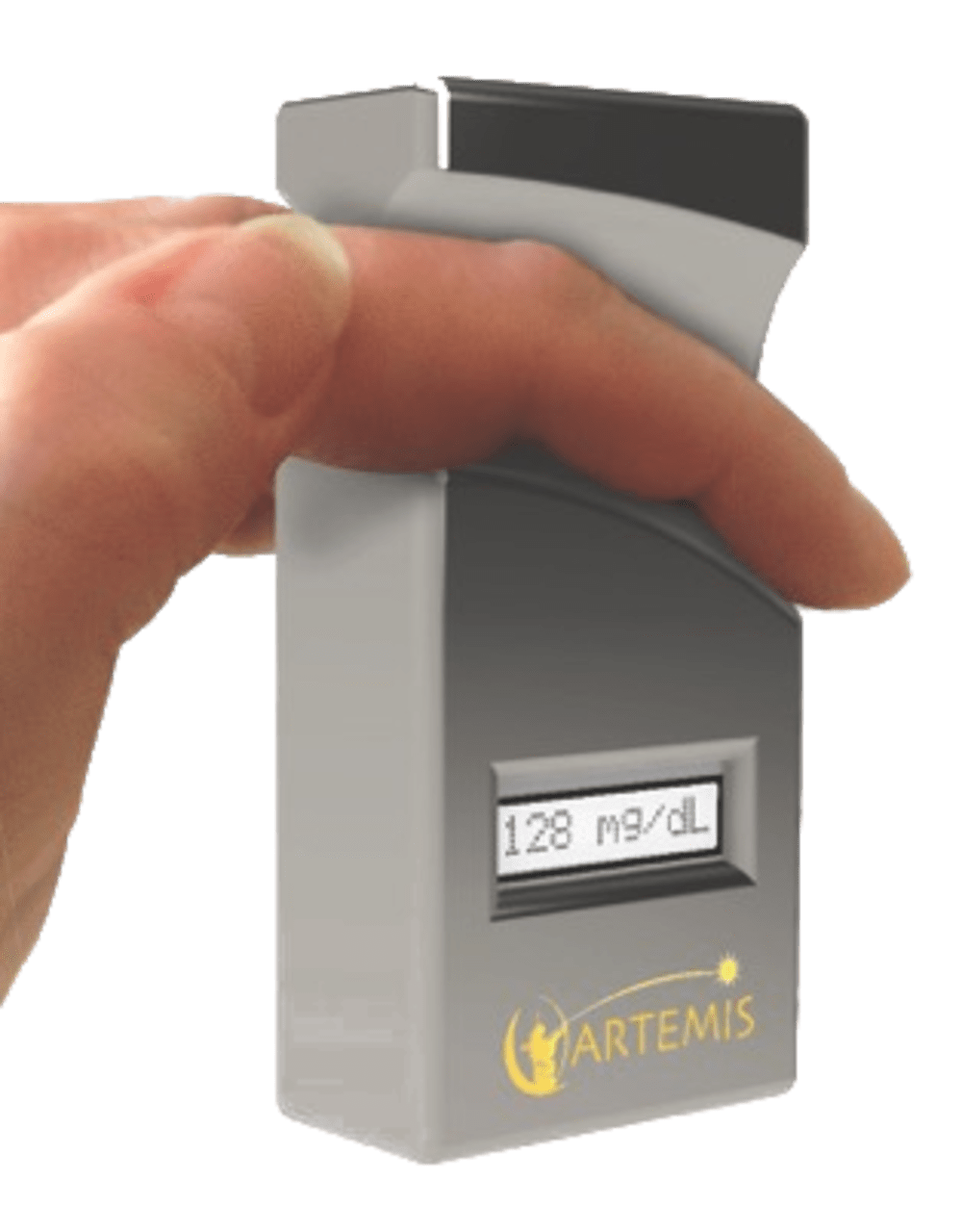Why not build a truly non-invasive blood glucose meter out of a short-wave infrared (SWIR) reflectance spectrometer, and use the changes in skin spectra it measures due to the cardiac pulse cycle to produce interference free blood spectra for analysis? Availability of a hand held version of this device eliminates painful blood samples, lancets, alcohol wipes and medical waste for hundreds of millions of diabetics worldwide. It also allows for a simplified testing procedure compared to conventional glucometers and allows users to test as frequently as desired with no additional pain, anxiety or cost.
Shining light on a user’s skin and measuring the amount of light returning from the skin is a non-invasive means of measuring spectra. However, left untreated, the spectra include information from not only the user’s blood (wanted information), but also the skin, hair, fat deposits, muscle, bone, etc. (unwanted information). Fortunately, a small change in spectral absorbance happens between systolic and diastolic pressures (see figure). At systolic, the absorbance signal contains the blood information and the unwanted information. At diastolic the absorbance contains only the unwanted information. The difference in absorbance measured at systolic and diastolic is an interference-free blood spectrum. This technique of blood spectral measurement is called pulse differential spectroscopy (PDS). The resulting blood spectrum can be related to glucose concentrations in the blood using calibration techniques such as regression analysis, artificial intelligence, etc. Other chemicals of interest in the blood, such triglycerides, alcohol, etc., having a spectral signature in the so called biological window (1um to 2um) can also be related to the blood spectra. These calibrations can be stored on the device to compute blood chemical concentrations.
Since the PDS absorbance modulation is small (approximately 0.1% of the total reflectance signal), the spectrometer has to be made sensitive and with high dynamic range. To achieve this, an array of laser diodes each having a different wavelength output in the SWIR band is used. Each laser in the array is turned on and off by itself and the reflected signal from the user’s skin is measured. The elements of the array are cycled rapidly enough to build a full spectrum hundreds of times per second. Once the full spectra are acquired over the course of a few cardiac cycles, the PDS spectra are computed and related to the calibration to produce the blood glucose or other blood chemical concentrations. This array of laser diodes is the core of the device and can be made into a small form factor that fits into a handheld device (see figure). Since it is a solid state device without disposables, it costs less than conventional glucometers.
This novel sampling technique and form factor is a break-through in non-invasive technology. Let’s build this revolutionary device to introduce the new way to treat and prevent illness and help improve the lives of millions of diabetic patients worldwide.
Like this entry?
-
About the Entrant
- Name:Jeremy Grata
- Type of entry:individual
- Software used for this entry:Solidworks, MATLAB
- Patent status:patented





